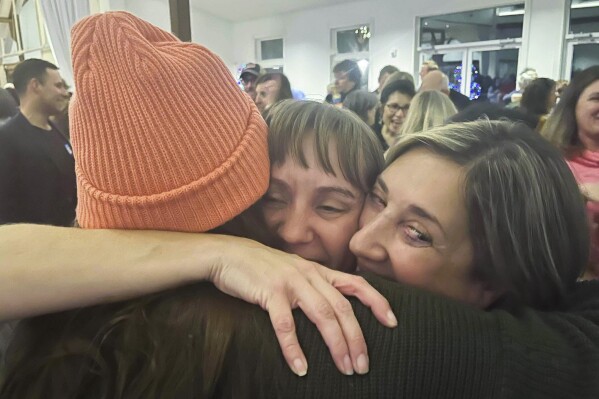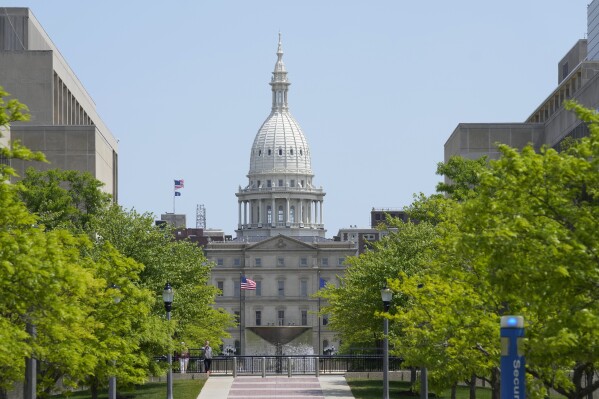Expensive judicial races might be here to stay in Pennsylvania after record high court campaign
HARRISBURG, Pa. (AP) — The race for an open seat on Pennsylvania’s highest court initially resembled the sleepy contests that had played out for decades: low turnout, little media coverage and just enough spending to afford some biographical TV ads on cable.
Then attack fliers began hitting mail boxes.
“Once that happened, it opened the flood gates up, because people were prepared to respond,” said Democrat Dan McCaffery, who ultimately beat Republican Carolyn Carluccio on Tuesday. “I think people came out of the woodwork ready to fight back.”
What happened next was a state Supreme Court election in Pennsylvania unlike any other. There was record-breaking spending, national media coverage and the highest turnout for an odd-year election in at least a quarter-century.
 Escapee captured after 9 days when dog bark alerted couple pleads guilty in Pennsylvania
Escapee captured after 9 days when dog bark alerted couple pleads guilty in Pennsylvania
 Liberal and moderate candidates take control of school boards in contentious races across US
Liberal and moderate candidates take control of school boards in contentious races across US
 Wins in local races will disrupt Michigan and Pennsylvania Democrats’ hold on legislative chambers
Wins in local races will disrupt Michigan and Pennsylvania Democrats’ hold on legislative chambers
Such high-stakes, high-spending partisan campaigns could become standard for judicial elections in Pennsylvania, a premier presidential battleground state where the state Supreme Court has issued pivotal decisions on major election-related cases in recent years.
That includes rejecting a Republican attempt to overturn the 2020 presidential election in Pennsylvania to keep then-President Donald Trump in power.
“Judicial elections used to be sleepy affairs, and that’s changed in recent years both in Pennsylvania and across the country,” said Shanin Specter, who helps lead the political arm of the Philadelphia Trial Lawyers Association, a major donor to McCaffery. “And so the reality is the statewide elections cannot be won without spending a lot of money and putting a lot of human resources into the effort, as well.”
McCaffery also made a point of discussing issues on the campaign trail, something judicial candidates had generally avoided in the past.
He framed the election as an existential moment for basic rights, and painted state courts as the last line of defense against the U.S. Supreme Court’s conservative majority.
Like Democrats did in the nationalized contest in Wisconsin a few months earlier where the party won the state high court’s majority, McCaffery and Democratic allies especially highlighted the U.S. Supreme Court’s decision last year to overturn Roe v. Wade.
Democrats had held a 5-2 majority on Pennsylvania’s Supreme Court before Chief Justice Max Baer died last year. McCaffery’s victory preserves that majority for at least two years, including through next year’s presidential election.
Democrats and their allies learned a hard lesson in Pennsylvania’s 2021 race for Supreme Court, when Republicans outspent Democrats by more than $1 million. Republican Kevin Brobson won by a mere 25,000 votes, or 1 percentage point.
This time around, strategists say, Democratic donors and allied groups were far more prepared and motivated — particularly by the desire to defend abortion rights and their interests in 2024’s presidential election.
Their preparation included focus groups that found that undecided voters had a visceral reaction to the idea of an anti-abortion candidate trying to hide their anti-abortion position, they said.
It became a key avenue to attack Carluccio, who was endorsed by a pair of anti-abortion groups. And it seemed to work: turnout was highest in more left-leaning areas of Pennsylvania, including suburban Philadelphia and Allegheny County.
In the end, turnout topped 35% and spending exceeded $22 million. Those who spent heavily in 2021 — such as labor unions, trial lawyers and groups that distribute money from billionaire Jeffrey Yass — spent more.
Some Democratic Party allies that spent nothing or next-to-nothing in 2021 spent six- or seven-figures this time around.
“There’s nothing that concentrates the mind like defeat, especially after you lose by less than 1%,” Specter said.
Based on reports filed thus far to the state, McCaffery and Democratic allies spent more than $13 million, compared to more than $8 million by Carluccio and her allies. Some spending has yet to be disclosed, and some groups haven’t disclosed donors.
The total spent is likely to be roughly half of what was spent in Wisconsin — a race that hinted what was to come in Pennsylvania.
“We all saw what happened in Wisconsin,” said Eric Stern, a strategist for the admaker Technicolor Political, which made TV ads for McCaffery’s campaign.
Some partisans blame the other side for a high-spending, hyperpartisan race.
Matthew Brouillette, who helped direct millions of dollars in spending to help Carluccio, wrote a post-election memo that warned allies they will be outspent “until our side gets the same fire” to help their candidates.
“It is definitely the new normal for the Democrats,” Brouillette said. “They see the Supreme Court as a super legislature.”
Kadida Kenner, CEO of the left-leaning voter registration group New Pennsylvania Project, whose staff went door-knocking to help McCaffery, said such judicial races are the product of Republican-backed efforts to overturn elections.
“This is the future and I don’t think we’re going back from this,” Kenner said. “And I think our judicial races will be even more partisan in the future.”
___
Follow Marc Levy at twitter.com/timelywriter.
Disclaimer: The copyright of this article belongs to the original author. Reposting this article is solely for the purpose of information dissemination and does not constitute any investment advice. If there is any infringement, please contact us immediately. We will make corrections or deletions as necessary. Thank you.




